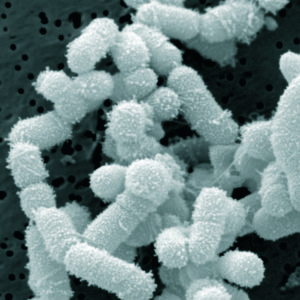
Two woodpeckers, same tree, moved up and down in unison.
Spring is almost here!
Health, Microbes, and More


Two woodpeckers, same tree, moved up and down in unison.
Spring is almost here!
 It's good to eat and drink dairy foods! Consuming dairy foods is beneficial for the gut microbiome, but each dairy food - whether milk, cheese, or yogurt - appears to have different effects on the composition of the gut microbiome (the community of bacteria, viruses, fungi).
It's good to eat and drink dairy foods! Consuming dairy foods is beneficial for the gut microbiome, but each dairy food - whether milk, cheese, or yogurt - appears to have different effects on the composition of the gut microbiome (the community of bacteria, viruses, fungi).
A recent small study found that consuming higher amounts of dairy foods is beneficial for the gut microbiome, and resulted in a greater variety of bacterial species (this is considered good for health). There was more abundance of the beneficial bacteria Bifidobacterium, a bacteria associated with digestive health and immune support.
Consumption of milk was especially beneficial in boosting a variety of beneficial bacteria (Faecalibacterium) known for their anti-inflammatory properties.
Higher amounts of total dairy foods consumed was associated with lower levels of Bacteroides, which are linked to inflammatory conditions and colorectal cancer.
Excerpts from news-medical.net: Milk boosts gut-friendly bacteria while cheese alters microbiome balance, study reveals
In a recent study published in the journal Nutrients, researchers in the United States explored the influence of dairy consumption on colonic mucosa-associated gut microbiota. By investigating specific bacterial composition changes linked to dairy intake, they highlighted its implications for individual and public health. ...continue reading "Dairy Foods Benefit Our Gut Microbes"
 The US uses massive amounts of the pesticide glyphosate (commonly known as Roundup) on farms, the sides of roads, and even by homeowners on their properties. More than 127,000 tons of this weed-killer (herbicide) is used just on US farm fields! But studies, including this recent study, find that glyphosate is also linked to health harms, including lower weights and earlier birth of babies.
The US uses massive amounts of the pesticide glyphosate (commonly known as Roundup) on farms, the sides of roads, and even by homeowners on their properties. More than 127,000 tons of this weed-killer (herbicide) is used just on US farm fields! But studies, including this recent study, find that glyphosate is also linked to health harms, including lower weights and earlier birth of babies.
The recent research found that increased glyphosate applications on farm fields in the last two decades (especially due to genetically modified crops and preharvest use) has especially impacted pregnancies and babies born in rural areas of the United States. That is, pregnant women in farm areas are the most impacted by glyphosate - it's not just used on the fields nearby (they get exposed from pesticide drift), but also in the non-organic foods that they eat. Lower birthweights are generally considered a predictor of health problems (and higher health care costs).
Evidence for health harms from glyphosate are increasing each year, such as an increased risk of cancer (e.g., non-Hodgkin lymphoma), premature births, endocrine disruption, and even disruptions of the gut microbiome (it kills beneficial microbes in the gut, including such important keystone bacteria as Faecalibacterium prausnitzii.) The percentage of people with glyphosate detected in their urine, and the amount (concentration) has been rising over time. It can now be detected in almost all of us, including children.
By the way, the US allows much higher levels of glyphosate residue on foods than countries in other parts of the world, including Europe. But in Brazil it's even worse with levels much higher than in the US, and with higher rates of childhood cancer and infant mortality.
Organic food production does not allow the use of glyphosate. To lower glyphosate levels in your body - increase the amount of organic foods that you eat.
Excerpts from Science: Common weed killer may be harming infants
Babies in rural counties of the United States that use a common weed killer are born slightly earlier and underweight, a large study finds. These changes, although small on average, could result in learning disabilities and an increased risk of infection, researchers reported last week in the Proceedings of the National Academy of Sciences, resulting in more than $1 billion in health care costs nationwide each year. ...continue reading "Study Finds Common Pesticide Has Effect On Pregnancies and Babies"
 Remember when for years eating eggs was viewed as unhealthy? And people were told to only eat egg whites? Well, well... how views have changed. Another recent study of 8756 older adults found that frequently eating eggs has health benefits - it is associated with a lower incidence of heart-disease related death and death from any cause.
Remember when for years eating eggs was viewed as unhealthy? And people were told to only eat egg whites? Well, well... how views have changed. Another recent study of 8756 older adults found that frequently eating eggs has health benefits - it is associated with a lower incidence of heart-disease related death and death from any cause.
How much lower? The study found a 29% lower incidence of cardiovascular disease death in relatively healthy older (70+ years) adults who ate eggs 1 to 6 times per week, when compared to adults who didn't eat eggs or ate them infrequently. The 1 to 6 times per week egg eaters also had a 17% lower rate of death from any cause, when compared to those who ate eggs infrequently or not at all.
Eggs are a great food. They are a good source of protein and essential nutrients, such as B vitamins, folate, unsaturated fatty acids, choline (very important for the brain!), selenium, fat-soluble vitamins (E, D, A, and K), and numerous other minerals and trace elements. A large egg is about 72 calories and 6 grams of protein.
Other studies have similar findings, as well as a lower risk of diabetes and a lower risk of hemorrhagic stroke in those consuming eggs frequently.
From Medical Xpress: Regularly eating eggs supports a lower risk of cardiovascular disease-related death, finds study
Regular consumption of eggs is associated with a 29% lower risk of cardiovascular disease-related death in relatively healthy older adults, new research from a Monash University-led team has found. ...continue reading "Health Benefits From Regularly Eating Eggs"

Some foods are considered good for the gut microbiome. Yogurt, which is loaded with beneficial bacteria, is one of them. A recent study found that eating yogurt two or more times a week for long periods of time (years!) is associated with a lower risk for several types of colorectal cancer.
However, it must be noted that the study found that eating yogurt, whether frequently or not, did NOT have an association with overall colorectal cancer incidence. It was just with colon cancer that had Bifidobacterium-positive tumors (31% of colon cancers in this study). Persons eating 2 or more yogurts per week had a 20% lower incidence of Bifidobacterium-positive tumors.
Yogurt contains Bifidobacterium bacteria, a bacteria that is considered tumor-suppressive. By the way, all fermented dairy products (e.g., kefir, buttermilk, cheese) have long been viewed as beneficial to health, and they all contain a variety of microbes, including Lactobacillus species.
From Science Daily: Long-term yogurt consumption tied to decreased incidence of certain types of colorectal cancer
Yogurt, which contains live strains of bacteria, is thought to protect against many types of diseases, with some reports indicating it could reduce risk of colorectal cancer. ...continue reading "Eating Yogurt Associated With A Lower Risk For Some Colorectal Cancers"
 Over the years the treatment of sports-related concussions has really changed. It used to be that the person was told to rest in a darkened room for several days, but lately research has been suggesting the opposite.
Over the years the treatment of sports-related concussions has really changed. It used to be that the person was told to rest in a darkened room for several days, but lately research has been suggesting the opposite.
A recent study found that after receiving a sports-related concussion, it is beneficial to engage in one 20 minute aerobic exercise 5 to 14 days after the injury (concussion). The aerobic exercise was only at 80% heart rate threshold (the threshold associated with symptoms worsening and/or exhaustion. In other words, it was an aerobic exercise that wasn't too vigorous, and only for 20 minutes. In the study they cycled on recumbent bikes.
In the small study (16 participants between 8-24 years, all varsity athletes), the exercise didn't make symptoms worse. In fact, it helped with their thinking (executive functioning of the brain) and improved concussion symptoms in the early stages of recovery. This may be due to increased blood flow and oxygen to the brain from moving about.
From Medical Xpress: Concussed athletes' brains benefit from just 20 minutes of exercise
In a new study, Western researchers have shown just one 20-minute session of moderate intensity aerobic exercise can improve an athlete's executive function and concussion symptoms in the early stages of recovery.
Executive function is essential for everyday tasks, from remembering a grocery list to making strategic decisions in sports. When a basketball player closely guarded by an opponent holds back from shooting, opting to pass the ball to a teammate instead, they're tapping into the brain's inhibitory control—an important aspect of executive function. But a sports-related concussion can disrupt executive function, impacting on-field performance.
...continue reading "Some Exercise After A Concussion In Athletes May Help Recovery"
 Type 2 diabetes is a huge problem in the US. Studies have long suggested that losing weight can help a person reduce or even stop having to use diabetes medication, and even reverse the diabetes. A recent study also found that type 2 diabetes in overweight individuals can be reversed by losing weight.
Type 2 diabetes is a huge problem in the US. Studies have long suggested that losing weight can help a person reduce or even stop having to use diabetes medication, and even reverse the diabetes. A recent study also found that type 2 diabetes in overweight individuals can be reversed by losing weight.
The good news is that the weight loss doesn't have to be huge - it can be as little as 8% of body weight (e.g., 16 lbs in a 200 pound person). Losing 8% of their body weight improved glycemic control because there was an improvement in their insulin responsiveness. By the way, all the participants in the study had a "sedentary lifestyle" and none exercised.
From Medical Xpress: Can type 2 diabetes be reversed? Experts say 'yes'
More than 36 million Americans have type 2 diabetes, a condition primarily attributed to the body's cells not responding to insulin properly, leading to high blood sugar levels. Due to the concomitant increase in the prevalence of obesity, type 2 diabetes is rising across the U.S. and around the world.
Insulin resistance drives type 2 diabetes, Shulman explains. "If you reverse insulin resistance, you reverse type 2 diabetes," he said. In a landmark study, Shulman and Kitt Petersen, MD, professor of medicine (endocrinology), showed that modest weight reduction—even as little as 10%—does just that. The study is published in the journal Diabetes. ...continue reading "Study Found Losing Weight Reversed Type 2 Diabetes"

A few days of a juice only diet is viewed by many as healthy, and a good way to cleanse the body. But... a recent study found that this is not true for the gut microbiome (the community of fungi, bacteria, and viruses), which is so important to our health. A vegetable and fruit juice only diet, even if it's only for three days, is unhealthier than juice plus whole foods, or only whole-plant foods diet.
The juice only diet promoted the growth of bacterial species in the gut that are linked to gut permeability, inflammation, and cognitive decline. The juice only diet also resulted in changes in the saliva and cheek microbiota (microbiome), especially an increase in pro-inflammatory bacteria. The researchers thought these changes were due to the low fiber intake of the juice only diet.
This is because fiber feeds the beneficial bacteria (linked to good health) in the gut. Juices are low in fiber, but whole fruits and vegetables are high in fiber (as are whole grains, seeds, nuts, legumes).
Participants in the study were divide into 3 groups. Each group followed one diet (juice only, juice + food, or whole plant based foods only) for three days. Bacteria in the mouth (saliva and cheek swabs) and gut (through stool samples) were analyzed before, during, and after.
Before participants followed one of the 3 diets, they first followed an elimination diet for 3 days: organic fresh fruits, vegetables, gluten-free whole grains, eggs, and 8 glasses of water a day. No alcohol, caffeine, sugar, processed foods, dairy, red meat, and gluten (e.g., wheat, rye, barley, spelt). This diet also had beneficial changes in the gut microbiome with increased numbers of bacteria linked to good health, for example, an increase in the gut bacteria Faecalibacterium prausnitzii.
From Medical Xpress: Juicing may harm your health in just 3 days, study finds
Think your juice cleanse is making you healthier? A new Northwestern University study suggests it might be doing the opposite. The study, recently published in Nutrients, found that a vegetable and fruit juice-only diet—even for just three days—can trigger shifts in gut and oral bacteria linked to inflammation and cognitive decline. ...continue reading "A Juice Only Diet Is Not Good For the Gut Microbiome"

Hairdressers are exposed to lots of harmful airborne chemicals in the products they and others use in hair salons. And it's every day they work, all day. A recent study found that the chemical exposure is especially high for hair stylists serving Black and Latina clients.
The airborne chemicals from the products hairdressers use (e.g., straighteners, relaxers, chemicals in permanents, hair dyes, sprays) are called volatile organic compounds (VOCs). They are air pollutants. These chemicals can pose health risks, such as reproductive effects, respiratory problems, cardiovascular effects, cancer, and skin and respiratory irritation. One common VOC hairdressers are exposed to is formaldehyde.
The study found that the level of VOCs in the air was much, much lower in office spaces not connected to the hair salons. Of course.
From Medical Xpress: Hairstylists serving Black and Latina clients exposed to high concentrations of airborne toxins
Hairstylists, especially those providing services to Black and Latina women, are exposed to high concentrations of harmful airborne chemicals in their workplace, a team of Johns Hopkins researchers has found.
The study, published in the Journal of Environmental Exposure Assessment, is the first to report indoor air concentrations of several volatile organic compounds or VOCs in U.S. hair salons serving this group of women. This builds on previous Johns Hopkins research that found Black and Hispanic hairdressers had higher levels of chemicals from hair relaxers, dyes, and other salon products in their bodies compared to office workers but did not specifically measure air concentrations of the chemicals. ...continue reading "Hair Stylists Are Exposed to High Levels of Harmful Airborne Chemicals"
 A group of international researchers got together and proposed reclassifying all the Lactobacillus species into 25 different groups (genera) a few years ago.
A group of international researchers got together and proposed reclassifying all the Lactobacillus species into 25 different groups (genera) a few years ago.
This was done because the Lactobacillus group had gotten too large and diverse, with over 250 bacterial species in it. The proposed name changes were then adopted by the leading microbiology society, which is why scientists currently use both new and old bacterial names, or just one or the other.
One bacteria important for sinus health is L. sakei. Lactobacillus sakei has now been reclassified as Latilactobacillus sakei, but both terms are used in research and elsewhere. The abbreviation L. sakei stays the same.
Most of the common Lactobacillus species that are used in probiotics have a name change, but typically either name (new and old) is acceptable. What many companies do to avoid confusion is to just use the abbreviated name (e.g., L. sakei, L. rhamnosus, and L. casei).
Examples of name changes for commonly used probiotic species: Lactobacillus sakei is now Latilactobacillus sakei, Lactobacillus rhamnosus is now Lacticaseibacillus rhamnosus, Lactobacillus plantarum is now Lactiplantibacillus plantarum, Lactobacillus brevis is now Levilactobacillus brevis, Lactobacillus salivarius is now Ligilactobacillus salivarius, Lactobacillus fermentum is now Limosilactobacillus fermentum, and Lactobacillus reuteri is now Limosilactobacillus reuteri.
However, the names of some commonly used probiotic species stayed the same, such as Lactobacillus crispatus, Lactobacillus gasseri, and Lactobacillus johnsonii.
Excerpts from ISAPP (International Scientific Association for Probiotics and Prebiotics): New names for important probiotic Lactobacillus species
The genus Lactobacillus was listed as the fifth most important category of living organism to have influenced the planet throughout its evolutionary history in a 2009 book, What on Earth Evolved?. From their central role in food fermentations around the globe to their ability to benefit health in their human and animal hosts, species of Lactobacillus have great importance in our lives. ...continue reading "Lactobacillus Name Changes"